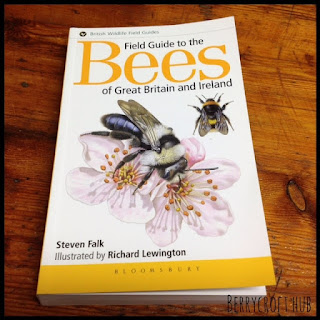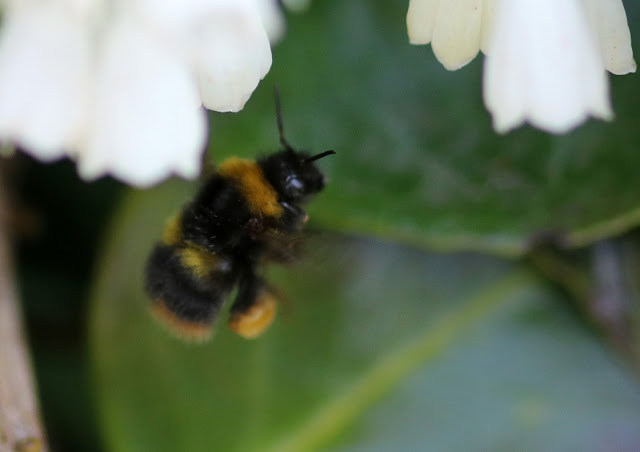A few months ago I attended the Warwickshire Recorders Meeting Conference, the first one I have managed to go to. It was a revelation, a great group of people and fascinating talks. One of the talks was by Steven Falk who presented his latest book - the Field Guide to the Bees of Great Britain and Ireland. Now I have to report a vested interest at this stage in that I know Steven. He worked for many years as the Keeper of Natural History at Warwickshire Museums Service. I met him several times and he even reviewed a copy of my first book.
Steven is a consummate ecologist, his passion for the subject is apparent the minute you are in his presence, he has written widely on wildflowers and trees but he is a magnificent entomologist. His book, illustrated by the equally talented Richard Lewington, is a masterpiece bridging the gap between the novices ID guide and a professional scientific key.
In his talk Steven regaled us with some of the stories he gathered during his time researching and writing the book. I attempted to buy a copy of the book but was somewhat deficient in the wallet department instead I ordered the book from Bloomsbury and waited the few days for it to arrive,
The book is beautifully presented with superb illustrations and descriptive text, opening up an entirely new world to me.
Since its arrival I have been dying to give it a whirl, today I managed to put aside some time and the weather was good enough for me to go on a bee hunt.
I started in the garden at the comfrey plants. Comfrey always attract bees and I did not have to wait long before a Bumblebee appeared and started flitting from flower to flower. I decide my best bet for identification was to obtain a photo of each species as I encountered them. This however was a lot harder than you might imagine. Bees move quickly and sometimes erratically and unless the flower is open then they have a tendency to disappear from view.
The first Bee I identified with the book was this one:
Also frequenting the Comfrey was a second species that proved a bit more difficult to ID,
After a little searching I was able to identify this Bee as Bombus pratorum, the Early Bumblebee. The most fascinating thing about this bee was the enormous pollen baskets on its legs.
On the brick wall of the conservatory there is a small hole into which a screw once held a trellis. As I passed I noticed another bee taking an interest, this I new had to be a mason bee and is this helped get me to the right place in the book revealing it to be Osmia bicornis, the Red Mason Bee.
These are an innocuous but pretty looking bees that are solitary and nest in small holes in bricks.
Venturing further afield I went down to the canal, ostensibly to check to see if the swans had hatched yet, they hadn't, but I also new several bees frequented the ivy that lined the towpath. Sadly there were none present at all, but on the way home I spotted a number of bees hovering beside a wall and entering cracks at its base. A first glance might make you think they were wasps but they are in fact Bees.
This species presented me with considerable difficulty, the more I looked the more confused I got and the more they looked the same. The book gave me a great starting place, they were obviously of the genus Nomada but getting closer than that was starting to prove difficult, but yet again Steven was able to help included alongside his book he has a vast flickr site with hundred and hundreds of photos, Stevens Flickr Page this helped me to narrow it down to Nomada marshmella, Marsham's Nomad Bee. This took some time due to the arrangement of the stripes on the abdomen and which ones met in the middle and which did not. The picture however nicely picks out the three ocelli on the top of the head, these are simple eyes, nothing more than basic photoreceptors useful for detecting movement.
So what can I say in conclusion? The book is well worth a purchase you will be amazed by the diversity of bees in the country although patience is most definitely required to first get closer enough to see or photo the bee and then work through the keys and pictures to a conclusion. If you love beautiful books, finding out more about nature or love bees then this is the book for you.
If you want to purchase your own copy you can from good bookstores and Amazon







No comments:
Post a Comment